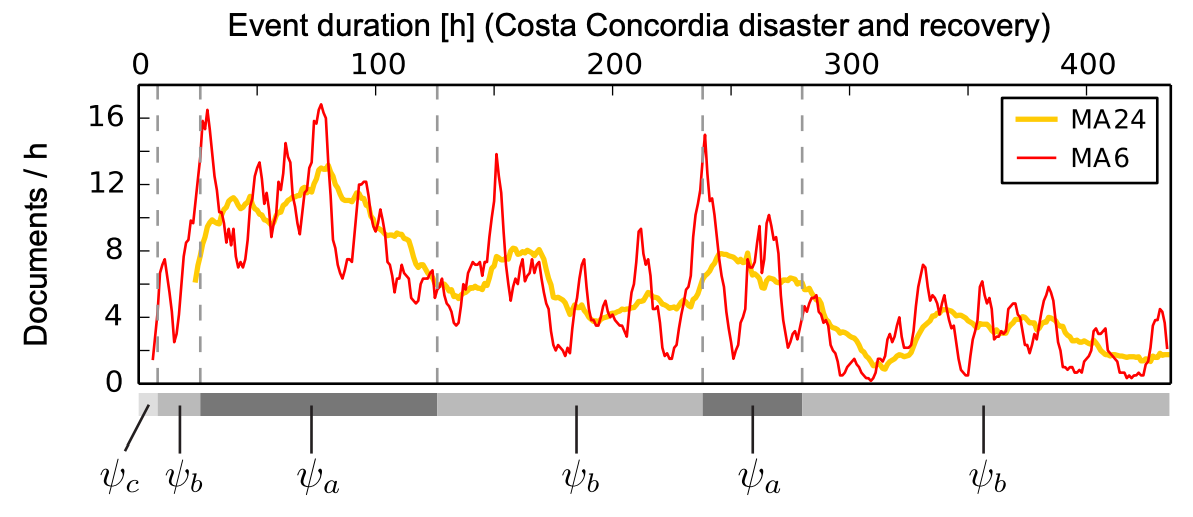Real-Time News Summarization with Adaptation to Media Attention
Our Contributions
- We analyze and leverage the media attention of news events to better summarize them in real time as the events unfold.
- We show that simple methods for document filtering, single document summarization, and redundancy detection are very effective for real-time summarization when automatically adjusted at run time for media attention.
- Our approach significantly outperforms a strong, non-adaptive real-time summarization baseline in terms of emitted updates and achieves the best results on a recent web-scale data set.
Adapting Real-Time Summarization to Media Attention
To adapt approaches to real-time summarization to the media attention at runtime, we continuously measure the news flow of articles related to the current event. We then measure the moving averages for the number of relevant news articles over time windows of 6 (MA6) and 24 hours (MA24). We leverage this information and specialize our approach to the media attention by selecting specialized hyperparameters (visualized below with psi).

Abstract
Real-time summarization of news events (RTS) allows persons to stay up-to-date on important topics that develop over time. With the occurrence of major sub-events, media attention increases and a large number of news articles are published. We propose a summarization approach that detects such changes and selects a suitable summarization configuration at run-time. In particular, at times with high media attention, our approach exploits the redundancy in content to produce a more precise summary and avoid emitting redundant information. We find that our approach significantly outperforms a strong non-adaptive RTS baseline in terms of the emitted summary updates and achieves the best results on a recent web-scale dataset. It can successfully be applied to a different real-world dataset without requiring additional modifications.
Bibtex
@inproceedings{ruckle-gurevych-2017-real,
title = "Real-Time News Summarization with Adaptation to Media Attention",
author = {R{\"u}ckl{\'e}, Andreas and
Gurevych, Iryna},
booktitle = "Proceedings of the International Conference Recent Advances in Natural Language Processing, {RANLP} 2017",
month = sep,
year = "2017",
address = "Varna, Bulgaria",
url = "https://doi.org/10.26615/978-954-452-049-6_079",
doi = "10.26615/978-954-452-049-6_079",
pages = "610--617"
}